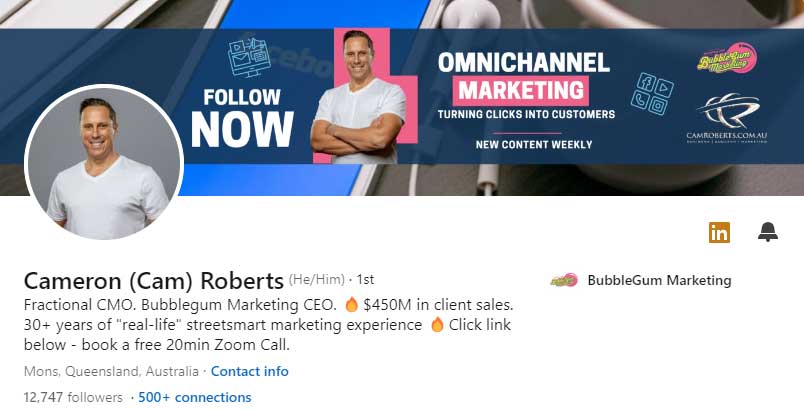What Is Google BARD? A Guide to Google’s New AI
By Cameron Roberts – Founder & CEO of Bubblegum Marketing,
Posted On October 16, 2025
What Exactly Is Google Bard?
Google Bard is Google’s conversational AI, a chatbot that uses machine learning and massive language models to understand questions, generate responses, and assist with all sorts of digital tasks.
Think of Bard as Google’s own take on ChatGPT, built with the search giant’s incredible data ecosystem and AI expertise. While ChatGPT is powered by OpenAI’s GPT models, Bard runs on Google’s PaLM 2 (and now Gemini) models, which means it can draw from real-time web data and provide fresher insights.
In simple terms, Bard artificial intelligence helps users ask questions in natural language and receive intelligent, detailed, and often creative answers instantly.
But here’s what makes it stand out: Bard isn’t just about chat. It’s designed to integrate across the Google ecosystem, from Search to Docs to Gmail, making Bard Google AI a deeply connected, all-in-one assistant for the digital age.
Why Did Google Create Bard?
When ChatGPT burst onto the scene, Google realised people were looking for faster, more conversational ways to access information, not just blue links on a search results page.
Bard Google was created to bring that conversational experience directly into Google’s world. Instead of just searching for information, Bard helps users understand it.
The idea is simple: blend Google Search with AI Bard to help people think, create, and learn faster whether they’re writing an article, planning a trip, analysing data, or researching a complex topic.
Key Features of Google’s Bard AI
Here’s what makes Google Bard AI one of the most advanced tools in the AI race:
- Conversational intelligence: Bard can respond naturally, remember context, and carry on a fluid conversation.
- Creative content generation: From blogs to poems to product descriptions, Bard AI can draft content, summarise ideas, or brainstorm creative angles.
- Real-time web data: Unlike some static AI models, Bard pulls live information from the internet for fresher, more accurate responses.
- Multimodal understanding: Bard is evolving beyond text, now capable of interpreting images and other media.
- Integration with Google apps: You can use Bard alongside tools like Gmail, Docs, Maps, and Drive to make daily workflows smarter.
For example, you could ask Bard to “summarise this document from Google Drive” or “find my recent email from Sarah and draft a response.”
That kind of deep ecosystem connectivity is where Google’s Bard AI truly shines.
How Bard Works (Without the Jargon)
At its core, Bard artificial intelligence relies on something called a Large Language Model (LLM), a neural network trained on billions of text samples from the internet.
This model learns grammar, facts, reasoning, and even patterns of creativity by predicting what words come next in a sentence. Over time, it becomes remarkably good at generating human-like responses.
When you ask Google Bard AI a question, it doesn’t just pull one answer. It generates multiple potential drafts, analyses them for relevance, and presents the most coherent one to you. You can even click “View other drafts” to explore alternative responses.
Bard in Action: A Real-World Example
Here’s a quick example from one of our own marketing campaigns at Bubblegum Marketing.
We tested AI Bard to help our team write the first draft of a blog post on sustainable branding. Within seconds, Bard generated a structured outline with headings, subtopics, and even relevant stats.
Instead of spending hours brainstorming, our content team refined Bard’s version, adding voice, tone, and creative examples. The result? A blog that ranked on page one in two weeks.
That’s the beauty of Bard artificial intelligence, it doesn’t replace creativity; it accelerates it.
Common Limitations (and How to Work Around Them)
Of course, even the smartest AI tools have their blind spots. Bard Google AI isn’t perfect — and it’s still considered an experimental product. Here’s what to keep in mind:
- Accuracy issues: Sometimes Bard might “hallucinate”, creating information that sounds right but isn’t. Always fact-check.
- Biases: Like any AI, Bard reflects the biases present in its training data. Be aware of this when using it for sensitive content.
- Limited sourcing: Bard doesn’t always show citations, making it harder to verify information.
- Data privacy: Avoid entering personal or confidential data, Bard’s responses are processed through Google’s systems.
Used responsibly, though, Google Bard AI can be a huge productivity and research booster for marketers, students, and creators alike.
Bard vs. ChatGPT: What’s the Difference?
While both Bard and ChatGPT are advanced conversational AIs, there are a few key distinctions:
- Search integration: Bard connects directly to Google Search for real-time data
- Updates: Bard has access to current events; ChatGPT’s free version is limited by older data sets.
- Collaboration tools: Bard integrates with Google apps (Docs, Sheets, Drive), while ChatGPT relies on plugins.
- Tone and style: Bard tends to deliver cleaner, factual responses, whereas ChatGPT is often more creative and flexible.
In short, Bard Google AI feels more like an intelligent research assistant, while ChatGPT feels like a creative co-writer.
Final Thoughts: Why Bard Matters
AI isn’t replacing creativity, it’s reshaping it.
Google’s Bard AI shows us how technology can amplify human potential. It’s not just a chatbot; it’s a partner in thinking, writing, and problem-solving.
For marketers and businesses, this means faster insights, smarter campaigns, and more meaningful connections with audiences.
The future of AI isn’t about competing with it, it’s about collaborating with it.
If you’re curious about how to integrate Bard artificial intelligence into your marketing or content strategy, reach out to us at Bubblegum Marketing.
Frequently Asked Questions
WANT TO BE OUR NEXT SUCCESS STORY?
Book a Free Consult
Schedule a 15-minute Free Consultation via Zoom meetings with our Director, Cam Roberts by clicking the button below now:
Recent Articles
- Why Your Email Click Rates Look Low in 2025
- How Our eCommerce Marketing Agency Drove 121% Growth
- What Is Google BARD? A Guide to Google’s New AI
- Facebook Ads Budgeting & Strategies for 2025
- Top Marketing Strategies from Fortune 500 Companies
- Weird & Wonderful: Things Google Probably Doesn’t Want You to Know
- Top 7 Mistakes Businesses Make Without a Facebook Ads Specialist
- Why Automated Sales Funnels Are a Game-Changer for Small Businesses
- How to Choose the Right Facebook Ads Agency in 2025
- Social Media Advertising Trends 2025 for Business Growth
Request A Quote
Request A Quote for your next Website or Funnel Project below:










































